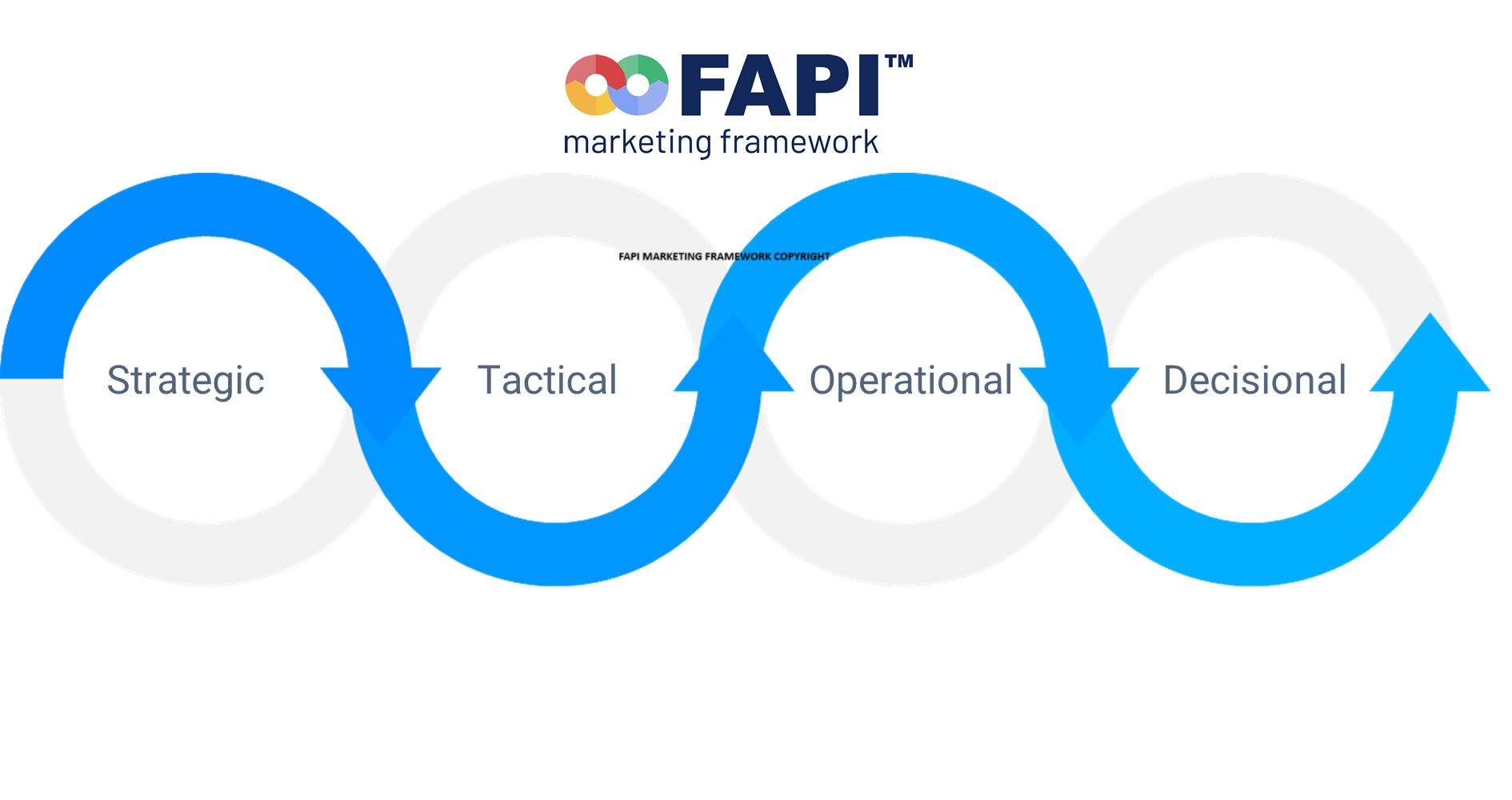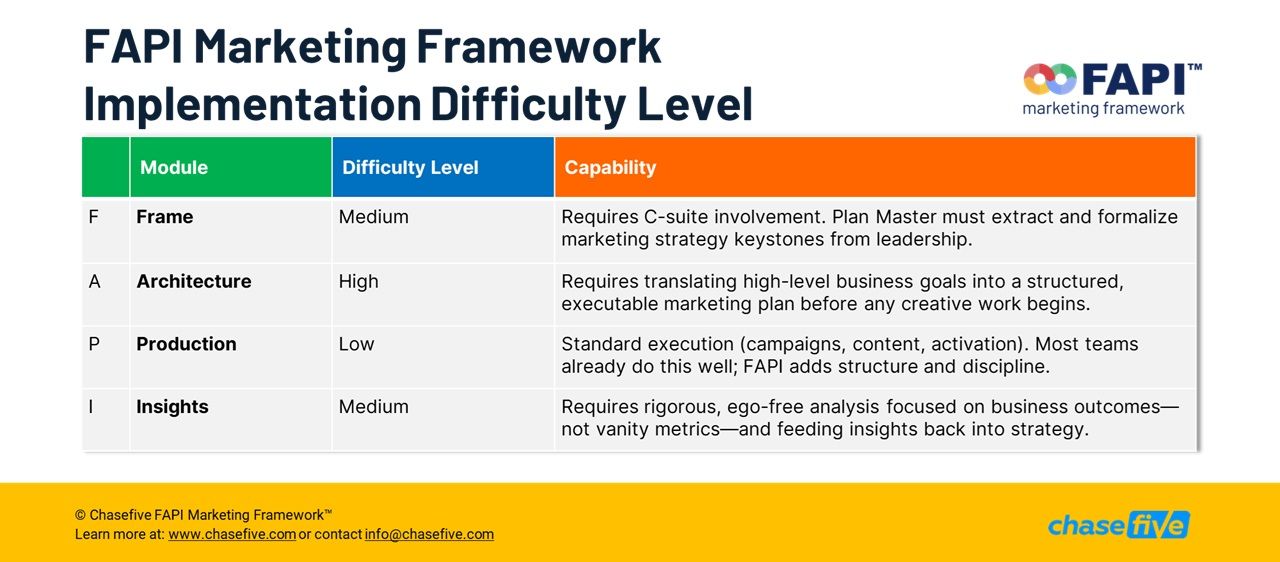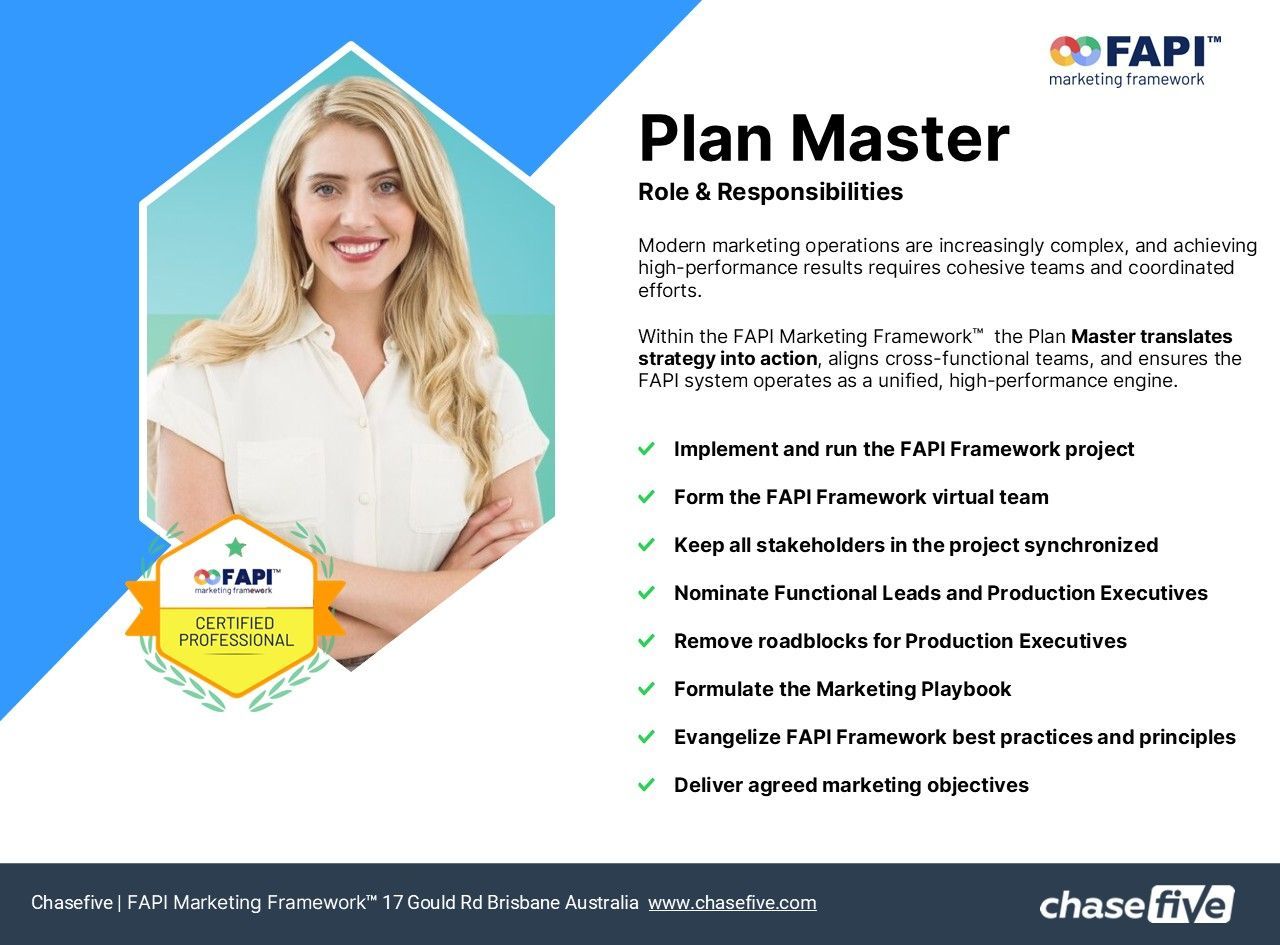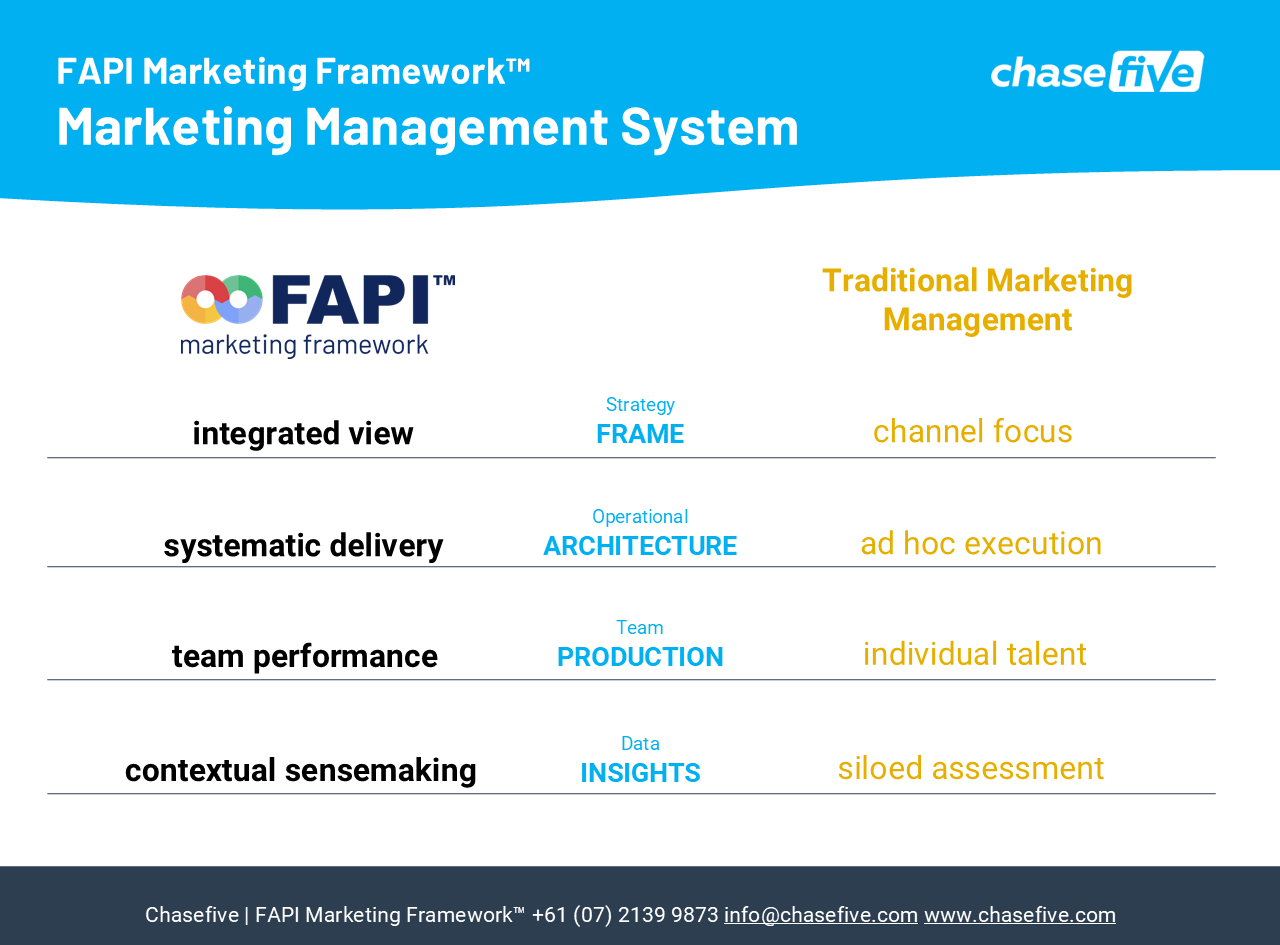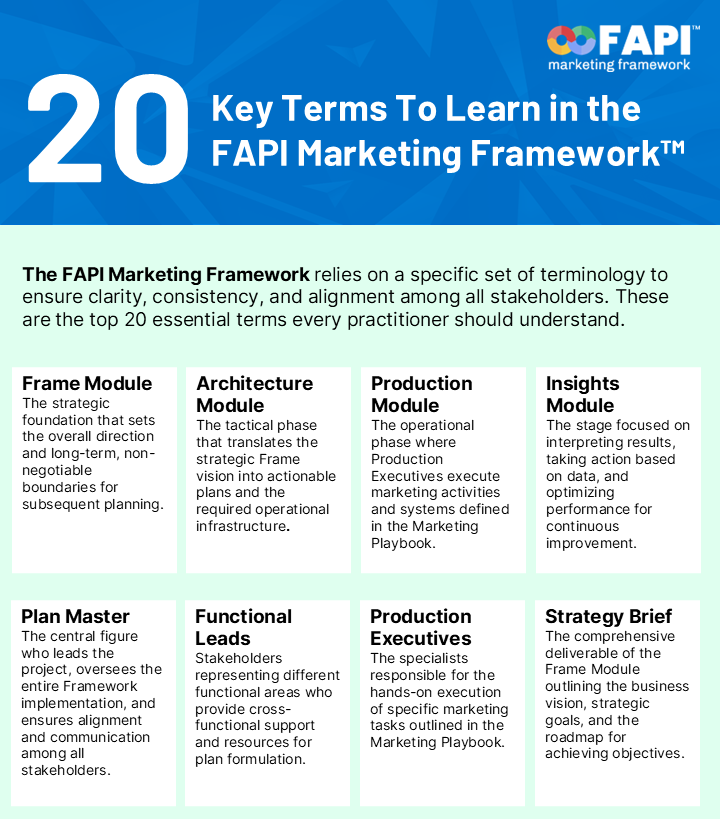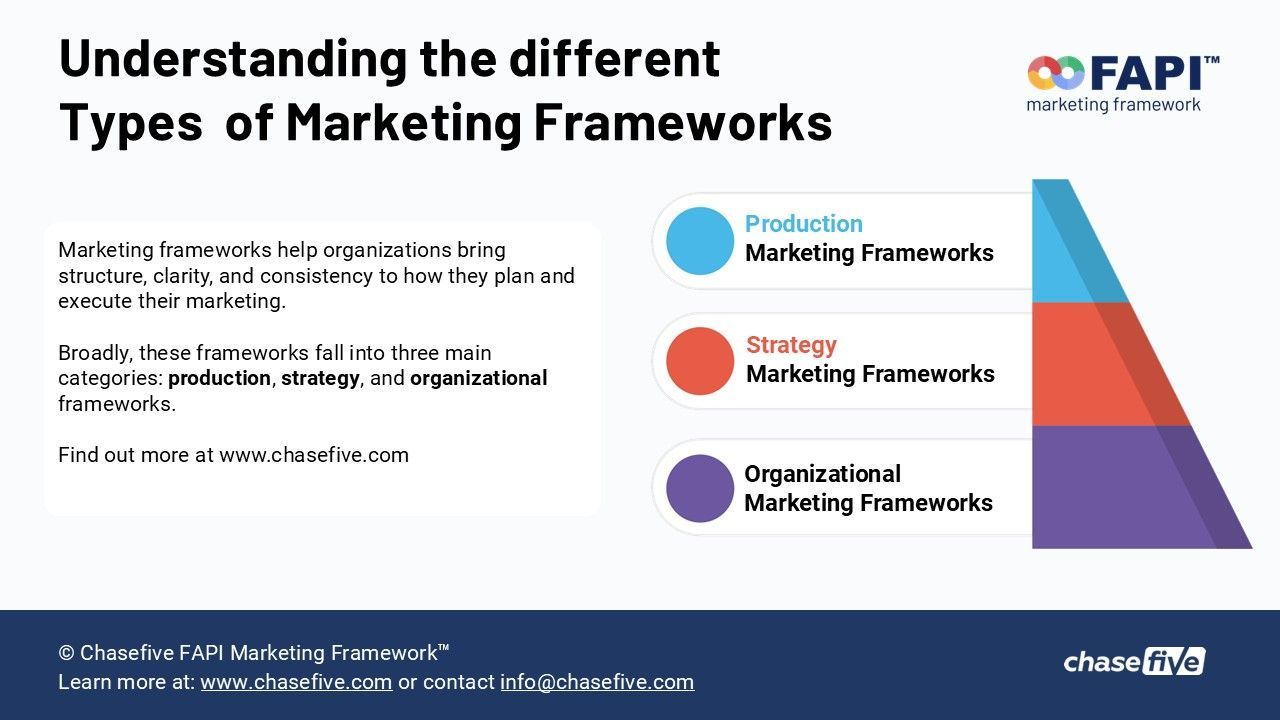Marketing accountability, how the FAPI Framework makes accountability crystal clear
In the world of marketing, accountability can sometimes feel like a moving target. But what if there was a system that made progress and responsibility visible at every turn? The FAPI Marketing Framework does just that, and one of its key mechanisms is the use of Defined Deliverables at each stage.
The FAPI Framework is designed to highlight accountability in marketing, ensuring efforts align with overall business objectives. While it establishes clear roles and responsibilities and emphasizes performance measurement, cross-functional collaboration, continuous improvement, and budgetary accountability, the structure of its deliverables is a powerful tool for transparency.
The Framework is structured with clear deliverables at each stage, which makes progress and accountability visible. Think of these deliverables as essential milestones, showing exactly what should be completed at each phase of the project and who is responsible for delivering it. This ensures that responsibilities are met throughout the project stages.
Here's a look at the specific deliverables associated with each module in the FAPI Framework, as outlined in the source:
For the Frame Module, the deliverable is the Strategy Brief. This brief outlines the business vision and strategic goals, setting the foundation for the entire project. Its completion signifies that the initial strategic direction has been defined and agreed upon.
Moving to the Architecture Module, the deliverable is the Marketing Playbook. This is a detailed operational document designed for execution, translating the strategy into concrete plans and processes. Having this document ready demonstrates that the operational blueprint is complete.
In the Production Module, the deliverable is the activities themselves. This means the tangible output of the marketing work – whether it's creative assets, campaign launches, content creation, etc. – serves as the deliverable. This directly shows that the execution phase is underway and producing results.
Finally, for the Insights Module, the output consists of reports and recommended actions. This deliverable shows the results of performance analysis and provides data-driven suggestions for next steps.
These defined deliverables act as checkpoints, ensuring that progress is visible and that stakeholders are held accountable for their contributions at each phase of the project. By clearly outlining what needs to be produced at every step, the FAPI Framework builds transparency and ensures that marketing efforts contribute effectively to the organization's overall success.
Don't let accountability be an afterthought! Enroll in the
FAPI Marketing Framework Certification Course today and gain the skills to lead effective, transparent, and accountable marketing initiatives that deliver measurable results.
